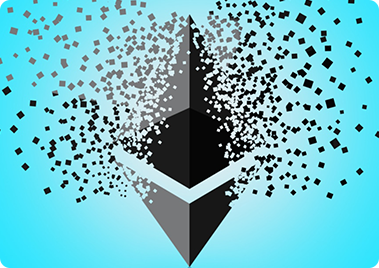For the longest time, Ethereum has been the preferred platform for developers to build decentralised applications. And why would it not be?! It was the first blockchain to introduce smart contracts and unleash the potential of blockchain beyond the payment system. It enabled developers to build all kinds of applications, from finance to content creation to digital art.
Ethereum currently dominates the entire applications game in the industry with over 2000 applications on it. But this monopoly seems to be cracking as Ethereum hits scalability issues. It doesn’t seem to be fit for mass adoption as the network gets congested, and it becomes expensive by the day to transact on Ethereum.
And Ethereum killers were soon to pick up and get to the bottom of the issue. They have made their way into the ecosystem to overcome the shortcomings of Ethereum and are attracting equal if not more attention by developers. One such Ethereum killer is Polkadot, so let’s see how it could potentially overtake the OG Ethereum.
Polkadot Vs Ethereum
Developer interest is one of the biggest edges that Polkadot has over its peers, and here is why it is garnering their attention:
P.S — Ethereum has started working on version 2.0, which is said to overcome the challenges in Ethereum 1.0, so we will talk about both versions and compare them to Polkadot. Read more
1. A More Spohistocaled Architecture
Ethereum 1.0 operates on a single-chain infrastructure where all transactions need to be validated by all nodes.
On the other hand, Polkadot is a multi-chain network with the main chain named relay chain to which all other independent (block)chains called parachains are connected. The network enables parallel processing of transactions, enhancing scalability and facilitating cross-chain communication.
What about Ethereum 2.0?
Ethereum 2.0 also has a similar structure with the main chain called the Beacon chain, to which shards are connected. Its primary focus is solving the scalability issue in Ethereum 1.0, and naturally, because all shards are a part of the same ecosystem, the communication between them is smooth.
However, the most significant difference between Polkadot and Ethereum 2.0 is that — Each shard on Ethereum 2.0 must have a uniform STF. State transition function or STF is the rules for how a blockchain changes state with each block. Polkadot whereas uses a different variant of sharding. It gives its parachains the flexibility to determine their own rules around it’s state changes.
2. Interoperability
Interoperability refers to how effectively blockchains can share data amongst themselves. At the moment, Ethereum lacks interoperability, and for that matter, most existing blockchains do. But people do realise that interoperability plays an important role when it comes to making blockchain more practical.
Likewise, Polkadot’s biggest strength is interoperability. The parachains, of course, are highly interoperable with each other, but they can also effectively communicate outside their network using bridges. For example, Ethereum could connect with the Polkadot ecosystem via a bridge parachain like Moonbeam and become a parachain on the network.
What about Ethereum 2.0?
But it would not be possible if a Polkadot parachain were to connect to a shard on Ethereum 2.0 because of lack of flexibility in STF. Ethereum 2.0 is only interoperable with Ethereum compatible shards.
3. Polkadot Solves for Better Scalability
The biggest problem facing Ethereum is network congestion causing scalability issues, thus pushing the gas fees. If you see, the existing Ethereum network is the home for all kinds of applications running together. This means several transactions get executed simultaneously, but there is only a single network to process them, causing the bottleneck.
Whereas the Polkadot architecture is designed such that multiple chains can parallelly process transactions. The parachains can execute the transactions independently without relying on the relay chain. Polkadot distributes the processing of transactions across parachains, making it scalable.
What about Ethereum 2.0?
Like Polkadot, Ethereum 2.0 is also a sharded network, but it can only support upto 63 shards, whereas Polkadot can do upwards of 100 shards.
4. Governance
Ethereum’s governance is off-chain right now, and no information of that changing for Ethereum 2.0 is floating around. It uses forums like GitHub discussions, All core Devs calls and Ethereum magicians to make decisions about the protocol.
On the flip side, Polkadot’s governance is managed on-chain through the on-chain council, the technical committee or the users. All proposals get approved only after most token holders vote in their favour.
Off-chain governance centralises the decision making of a network, whereas on-chain governance gives authority to the users.
5. Upgrades
Both, Ethereum 1.0 and 2.0 follow the usual hard fork process for upgrades. The validators will have to upgrade their nodes to implement the protocol changes. But on Polkadot, forkless upgrades can happen.
Hard forks typically split the community into two, and with forkless hard forks, it can be avoided.
Why Polkadot May Kill Ethereum?
These are just some ways in which Polkadot is better than the existing Ethereum network and its 2.0 version. Various other reasons may contribute to Polkadot coming out as a strong network, including community strength.
The blog is written considering that parachains have just begun to launch. As all parachains roll out, it might happen that Polkadot would have already overtaken Ethereum.






